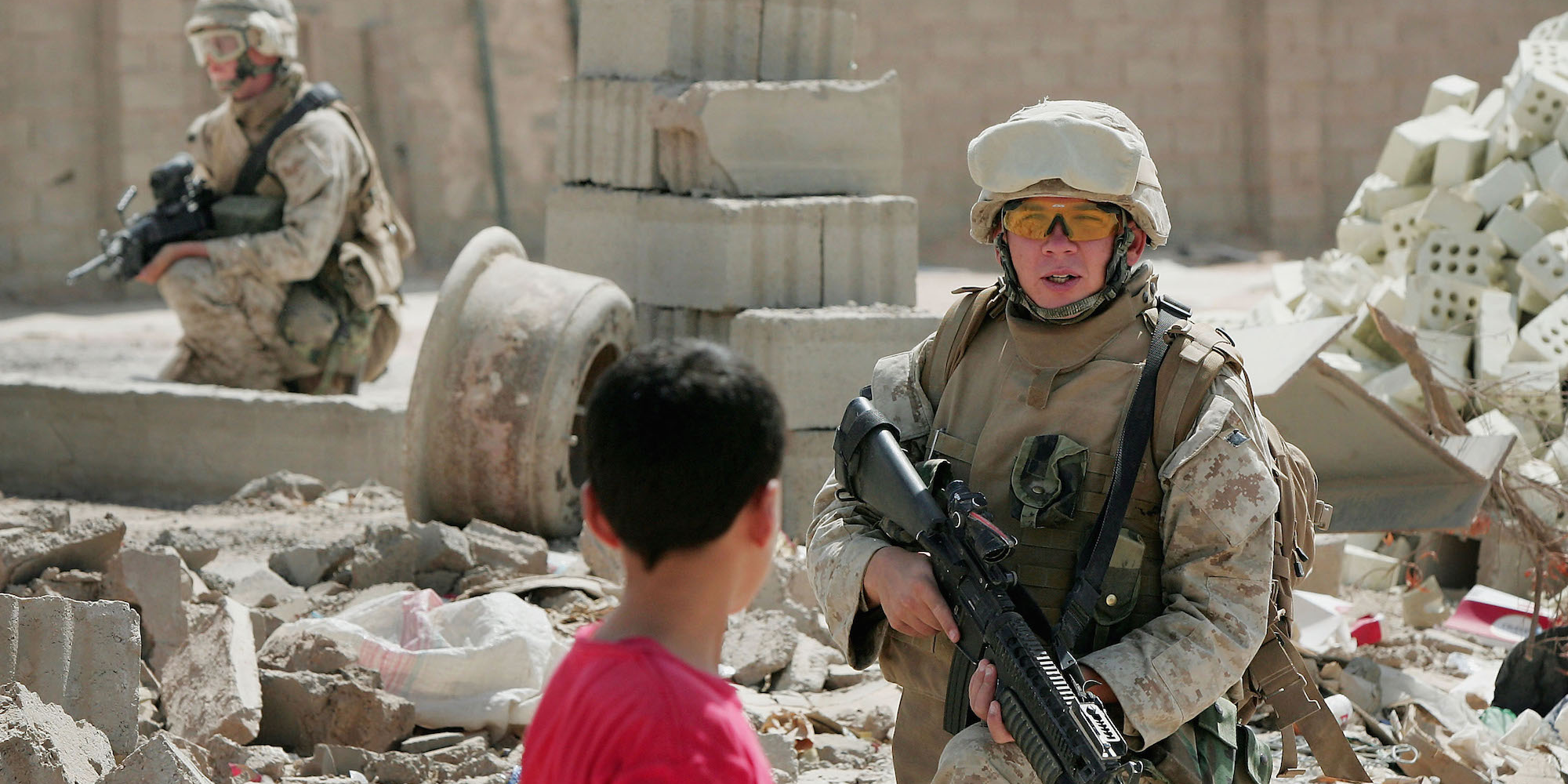The US invaded Iraq 15 years ago on Tuesday.
The invasion was approved by Congress and had majority support among the American public, but is now considered one of the greatest foreign policy blunders in US history.
Former President George W. Bush’s administration sold it on the pretext that Saddam Hussein had, or was trying to make, weapons of mass destruction (most notably nuclear weapons), and that Iraq’s government had connections to various terrorist groups, including al-Qaeda.
While Hussein’s links to terrorism and nuclear ambitions turned out to be untrue, the US occupied the country for nearly eight years before pulling out, creating a power vacuum that ISIS filled.
Two years later, the US military was back in the country - this time fighting a completely different enemy.
Here's a look back at the last 15 years:
"The Iraqi regime has plotted to develop anthrax, and nerve gas, and nuclear weapons for over a decade," Bush said during the 2002 State of the Union Address.

For more than a year after 9/11, the Bush administration made similar comments about Hussein's nuclear ambitions, and also his ties with terrorism.
"Simply stated, there is no doubt that Saddam Hussein now has weapons of mass destruction," Vice President Dick Cheney said in August 2002.
"We don't want the smoking gun to be a mushroom cloud," National Security Advisor Condoleeza Rice said on CNN in September 2002.
These statements, and others made by Secretary of Defense Donald Rumsfeld and Secretary of State Colin Powell, turned out to be based on faulty intelligence.
Some disagreed with the Bush administration's intelligence assessments, including former Commander of US Central Command Gen. Anthony Zinni, and even argued that the administration lied about Hussein's nuclear ambitions and links to terrorism.
On March 20, 2003, after Bush gave Hussein 48 hours to relinquish power, the US launched Tomahawk cruise missiles on Baghdad in a strategy the Pentagon called "shock and awe."

The "shock and awe" bombing strategy was followed by an invasion of about 130,000 US troops.
In early April 2003, Baghdad fell, symbolized by the toppling of a state of Hussein in Firdaus Square.

In May 2003, Bush landed on the USS Abraham Lincoln in a fighter jet while wearing a flight suit, and announced that major combat operations in Iraq were over.

A large sign reading "Mission Accomplished" hung behind him as Bush spoke, but in reality, the US military would fight a long, brutal insurgency for years after his speech.
In March 2004, a few months after Saddam Hussein was captured near Tikrit, four Blackwater contractors were killed and hung by insurgents from a bridge in Fallujah.
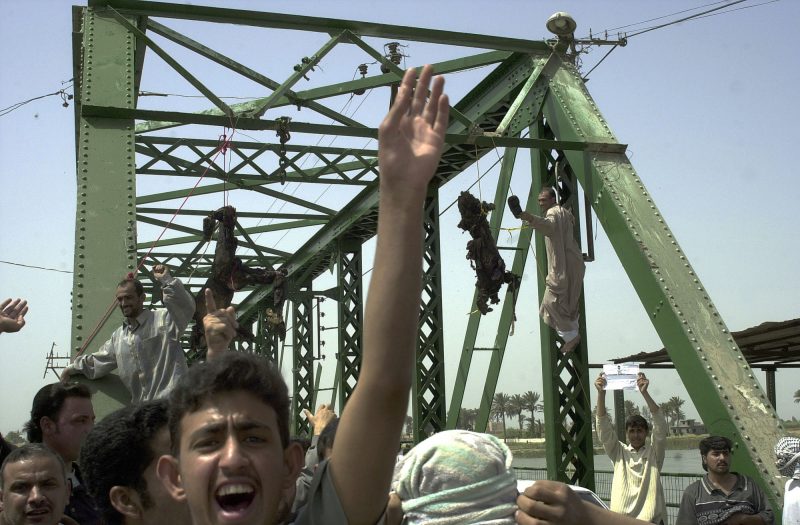
The incident led to a nearly year-long battle for Fallujah.
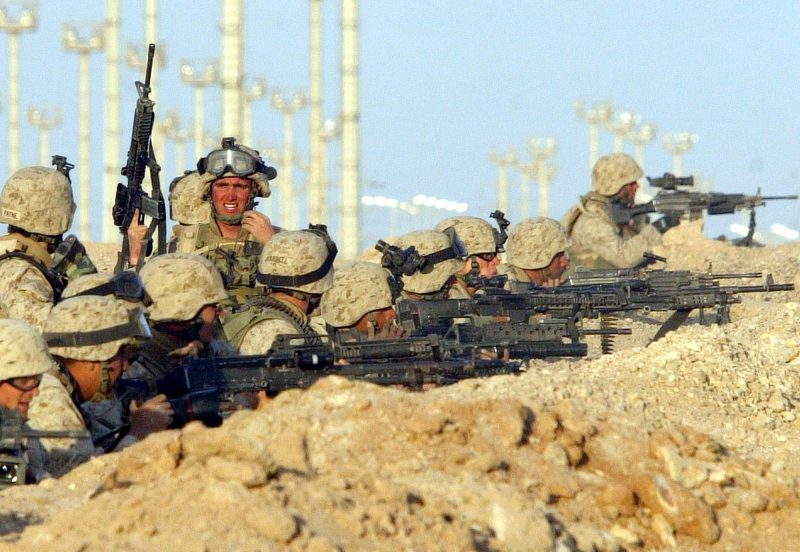
The insurgents that US troops battled over the coming years were a diverse group, composed of criminals, former Iraqi soldiers, Sunni militias, and eventually foreign fighters such as al-Qaeda.

In 2004, and in the coming years, US troops battled insurgents not just in Fallujah, but all across Iraq, including Mosul, Samarra, Najaf, Abu Ghraib (where it was discovered US troops were torturing and abusing detained Iraqis), and many more.
In January 2005, photographer Chris Hondros captured US troops accidentally killing the parents of 5-year-old Samar Hassan seen below.
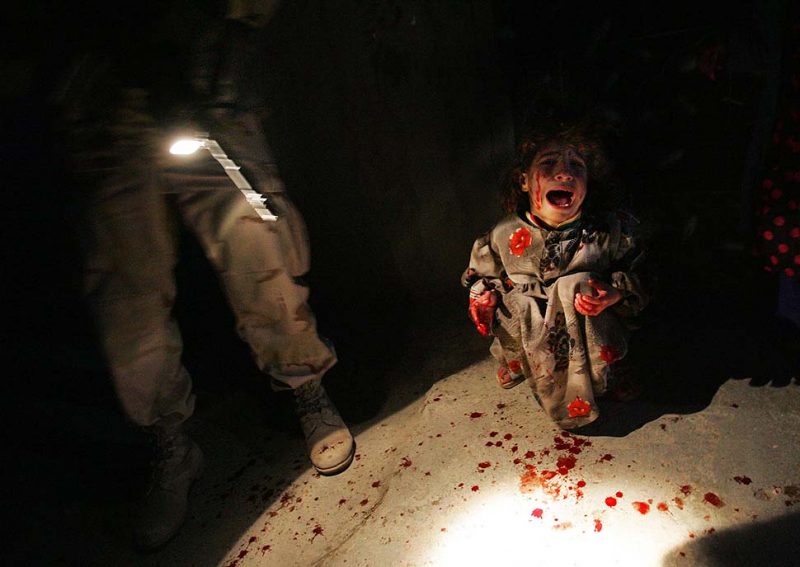
The incident shined light on a growing concern that US troops were often accidentally killing civilians.
One of the most egregious incidents came in 2007 when Blackwater contractors killed 17 Iraqi civilians in Nisour Square in Baghdad.
By 2007, as Iraq was in chaos and US troops were battling a bloody insurgency that some characterized as a game of whack-a-mole, the US decided to deploy 30,000 more troops to the country in what became known as the "surge."

With nearly 900 killed, 2007 was also the bloodiest year for US troops in Iraq, which added to the growing anti-war sentiment among the American population.
Some of the sentiment, however, had been tempered over the previous four years by Bush's decision to not allow the media to photograph the coffins of returning US troops - something they knew helped the Vietnam protesters in the 1970s.
Source: NBC
Growing anti-war sentiment led not only to the Republicans losing Congress in 2006, but also the election of President Barack Obama in 2008.
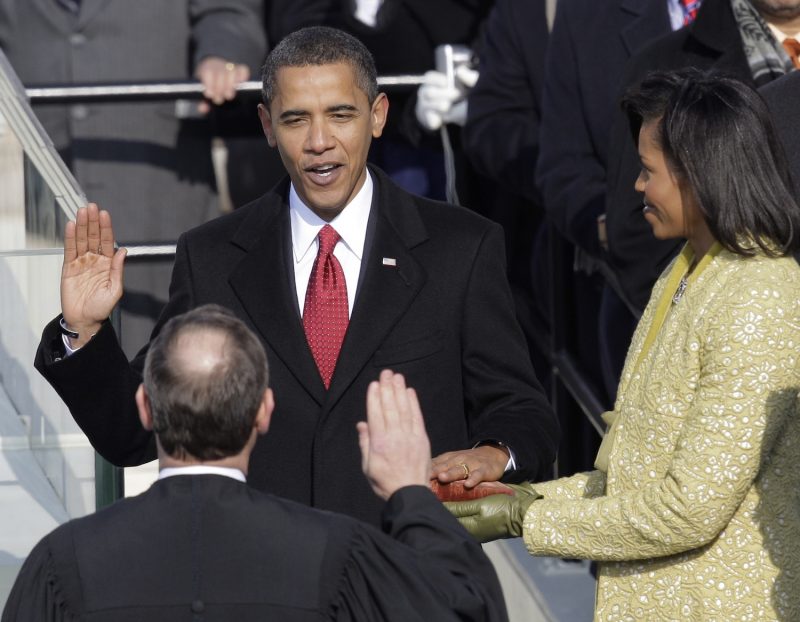
Shortly after Obama's inauguration, he announced the drawdown from Iraq, which culminated in the last troops leaving in December 2011.
In total, the war in Iraq killed hundreds of thousands of Iraqi civilians, 4,500 American troops, and cost over $2 trillion.
But the Iraqi government and army could not fill the power vacuum left behind by the departing US military. In 2014, a new terrorist group called ISIS began taking large swaths of northern Iraq.
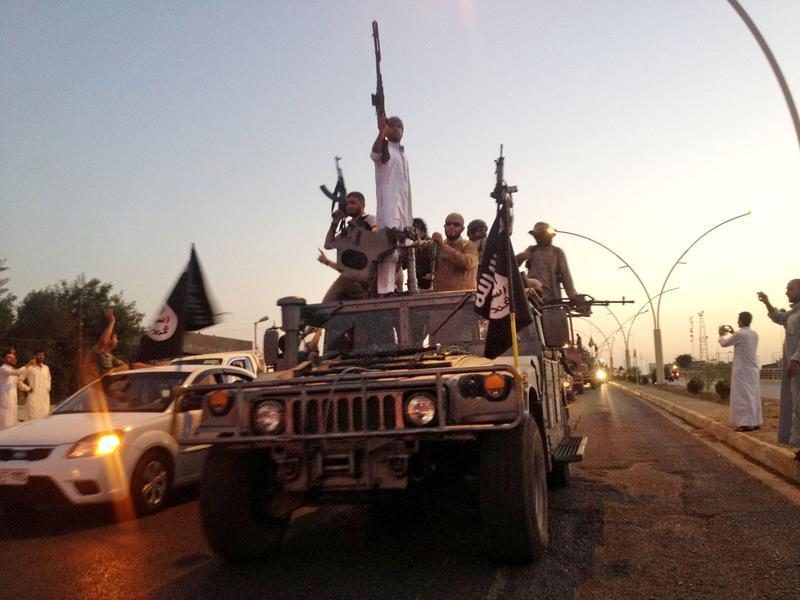
ISIS, which was founded by Abu Musab al Zarqawi in 2004, entered Mosul in June 2014.
In 2014, a few thousand troops were sent back to Iraq to dislodge ISIS, but this time the US had a new strategy.

Whether learning from old mistakes or simply because there was a new administration with a different agenda, US troops this time were deployed mainly to train and support Iraqi security forces and Kurdish militias battling ISIS.
In October 2016, the main battle for Mosul began, where the Iraqi military slowly retook the city with US artillery support. By July 2017, the city had fell after a long siege.

An AP investigation found that 9,000-11,000 civilians were killed in the battle for Mosul.
In December 2017, the Iraqi military declared the country "fully liberated" from ISIS. Although sectarian tensions still remain, Iraq has become more stable since the fall of ISIS.

There remains disagreement about who or what is responsible for ISIS gaining so much ground in Iraq. Some blame Bush's initial invasion, some blame Obama's drawdown.
While the two are not mutually exclusive, it cannot be denied that the Bush administration initiated the fighting.
Source: CNN

